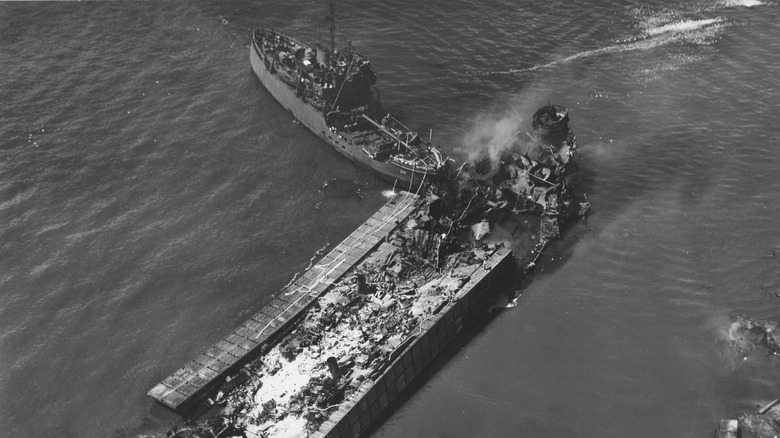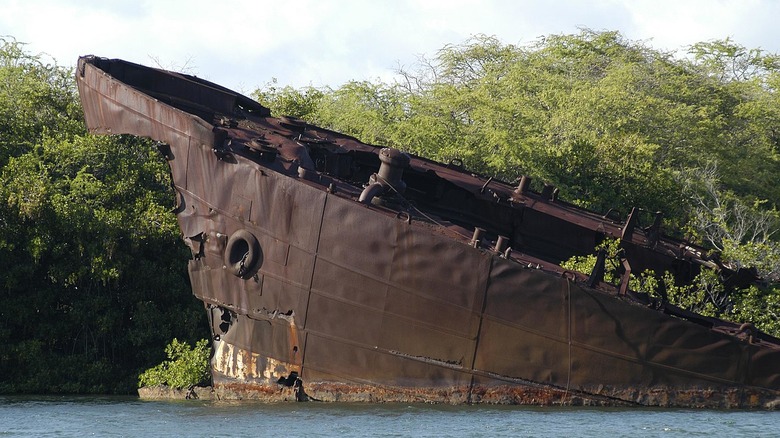The Mysterious Explosions That Hit Pearl Harbor In 1944
The attack on Pearl Harbor in 1941 was one of the most devastating single attacks to touch American territory. Over 2,000 Americans lost their lives that day, and 19 ships were damaged or sunk beyond repair, including eight battleships. While from a strategic standpoint this was actually not as damaging as it seemed, since many were re-floated and aircraft carriers turned out to be the way of the future, the massive death toll and accompanying psychological effect forever scarred the American public. Yet after all of this, Pearl Harbor was not finished as the site of war and tragedy.
In 1942, there was a lesser-known second attack on Pearl Harbor by the Japanese; this time by two long-range flying boat bombers and submarines, which refueled the aircraft (via Stripes.com). None died in this incident, as visibility was obscured by clouds and the bombs landed in unpopulated areas. In 1944, however, when the war was very much going in America's favor, a massive explosion ripped through Pearl Harbor once again and left many Americans dead. This time, though, it was not the fault of the Japanese.
The West Loch disaster
In May 1944, Pearl Harbor was the staging ground for the voyage to Saipan. In the West Loch of the harbor, there were a large number of landing ships full of unsecured depots of fuel and ammunition docked alongside each other. On the day of the incident, one of the ships suddenly exploded and sent crew and debris flying in multiple directions (via Naval History Blog). As emergency personnel and anyone nearby tried to help whomever they could, the debris set off a chain-reaction and other ships began to explode as well.
After enormous efforts to contain the disaster (both physically and in the media), 163 were found to have been killed while 396 were injured (via San Diego Union-Tribune). Despite being called "The Second Pearl Harbor" by witnesses, this was not the result of an enemy attack. The truth is instead shrouded in mystery, as all crew members near the estimated blast origin were killed. Per the recollections of survivors, lit cigarettes were a common sight at the time and one could have very easily been the catalyst. While the specific cause may never be known, it was almost certainly facilitated by the handling of war materials and led to major safety reforms in the following months (via Naval History and Heritage).

